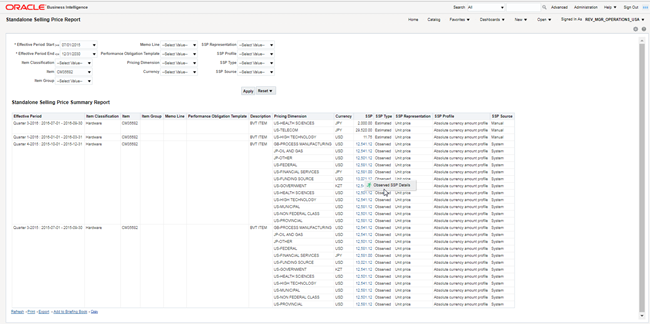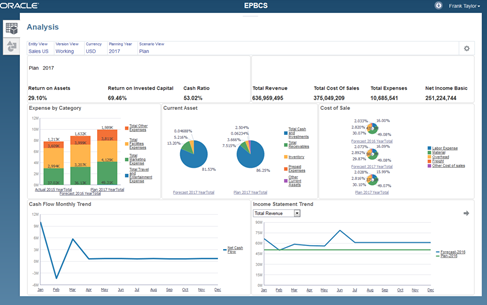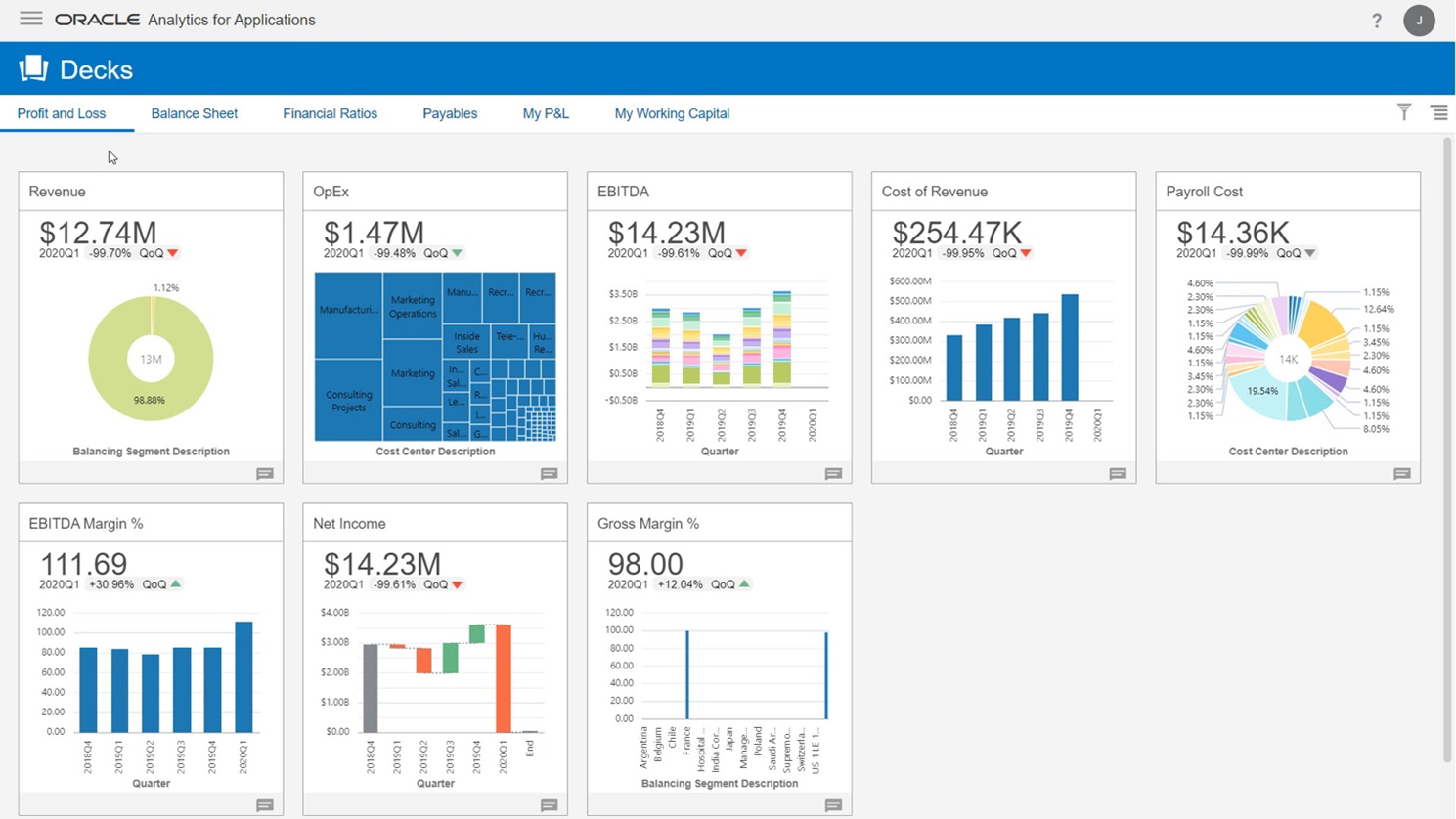Updated April 10th, 2024
The Fusion Applications Suite provides a variety of reporting and analytics solutions, each with purpose-built capabilities for common customer needs.
This post summarizes the principal use cases into Fusion Cloud ERP, Fusion Cloud EPM, and Fusion Data Intelligence (FDI) and how they integrate with Cloud ERP. Its objective is to help you define your enterprise reporting strategy.
Note that FDI is the successor to the Fusion Analytics Warehouse (FAW).
Introduction
Fusion Cloud ERP, Fusion Cloud EPM, and Fusion Data Intelligence (FDI) offer different features and functions. Depending on your operational infrastructure and business requirements, a report could be delivered by one or more of them. Factors to consider when deciding where to address a users’ reporting requirements include:
- Must the report display real-time data?
- Is the output highly formatted externally facing document such as checks, regulatory submission or customer invoice?
- Are you preparing a financial statement destined for boardroom or shareholder presentation?
- Does the report combine data from divisional or local ERPs?
- Do business users author their own reports and analytics?
- Will you be combining data from Cloud ERP with operational data from other systems?
High level differences between the solutions are summarized here:

Note that apparent overlaps between solutions arise legitimately. For example, local or regional financial metrics may also be measured at the enterprise level.
High Level Architecture

Cloud ERP

Cloud ERP excels at monitoring and reporting on processes it controls. Its reporting features access Cloud ERP transaction data directly. As a result, it is ideal for real-time views of data needed for the day-to-day operations of the finance department. For example, customers rely on Cloud ERP for the detection of anomalies (using Account Monitor) and for detailed reconciliations between upstream processes (using Clearing Account Reconciliation). For customers who use Cloud ERP as one of many financial management applications, reporting can generate divisional or regional financial statements.
Here are some of the capabilities included in your Cloud ERP subscription:
- Secure, self-service reporting (including dashboards) via Oracle Transactional Business Intelligence (OTBI) that enables business users to see and report on Cloud ERP data.
- Interactive tools for report design and formatting that make it easier to produce reports with the right “fit and finish” (for delivery to external customers, for example).
- Real-time monitoring and tracking of account balances from Account Monitor that provides finance teams with this critical data.
- Reporting based on summarized balances from a multi-dimensional data model that maintains data balances in real-time.
- Easy alerting and KPI monitoring using Infotiles, which are mini dashboards that can be embedded within Fusion Apps pages to direct users’ attention to critical information.
However, Cloud ERP wasn’t designed to consolidate data from other ERP applications, and it doesn’t provide reporting for processes it doesn’t manage. EPM and FDIP fulfill that role.
Enterprise Performance Management (EPM)

Cloud EPM is intended for organizations with many ERP applications. It excels at consolidating information from various sources for enterprise-level, centralized reporting. It converts data to a common set of structures (e.g., chart of accounts and calendars) to remove dependencies on any single application’s data model. Cloud ERP users get the bonus functionality of reverse mapping from Cloud EPM, allowing them to do things like write back budgets and enterprise journals to Fusion Cloud General Ledger (GL).
Functionally, Cloud EPM is ideal for enterprise-level reporting and planning (especially cross-functional planning) and financial planning. It includes specific tools to:
- Handle complex consolidation scenarios across subsidiaries as part of Financial Consolidation and Close.
- Prepare boardroom-ready financial statements and accompanying commentary with Narrative Reporting.
- Centralize reference data for chart of accounts across Cloud ERP, Cloud EPM and more with Enterprise Data Management.
- Manage the complete planning and budgetting cycle.
In addition, Cloud EPM features specific benefits for Cloud ERP customers, including:
- Out-of-the-box (scheduled or on-demand) integration between Cloud ERP and EPM.
- Chart of accounts and calendars are converted to and from common structures.
- Material adjustments from financial consolidation and budgets can be written back to Cloud GL.
Fusion Data Intelligence

Fusion Data Intelligence (FDI) is a data, analytics, and AI platform capable of meeting the demands of large, complex organizations. It’s prebuilt for Oracle Fusion Cloud Applications yet also works with any third-party data sources. It is well suited to cross-module or cross-functional use cases and includes key capabilities that professionals expect in an enterprise solution. These include (but are not limited to): prebuilt KPIs, dashboards, single-click access to machine learning features, and much more.
Most customers want a mixture of operational and financial data to run their day-to-day business operations. FDI provides for out-of-the-box extraction of financial data from Cloud ERP that customers can then enrich and combine with operational data from other applications. For example, for a transport business, operational data might include fleet information like rates and service schedules. For companies in hospitality, operational data would include data about occupancy rates, inventory. And so forth.
Highlights and major differentiators include:
- Oracle ERP-specific analytics for general ledger, accounts receivable, accounts payable, fixed assets, procurement, spend, employee expense, and project management.
- “Lights-out” data pipelines for Fusion Cloud Applications and other data sources.
- Self-service analytics that allow non-expert users to explore data multiple ways, including natural language, voice, AI-generated narration, and more.
- AI and machine learning models that enable predictive and prescriptive insights and recommendations.
- Secure, authoritative analytics enabled by a curated semantic model.
- An extensibility framework for using external data and extending out-of-box capabilities.
Conclusion
Together, Oracle Cloud ERP, EPM, and FDI offer the full breadth of reporting and analytical applications required by modern, high performing organizations. While Cloud ERP financial reporting features suffice for transactional analysis for many companies, Cloud EPM and FDI additional, robust capabilities.
Together, they complement each other to create a complete portfolio, enabling more effective strategy development, business planning, and management of day-to-day operations.
